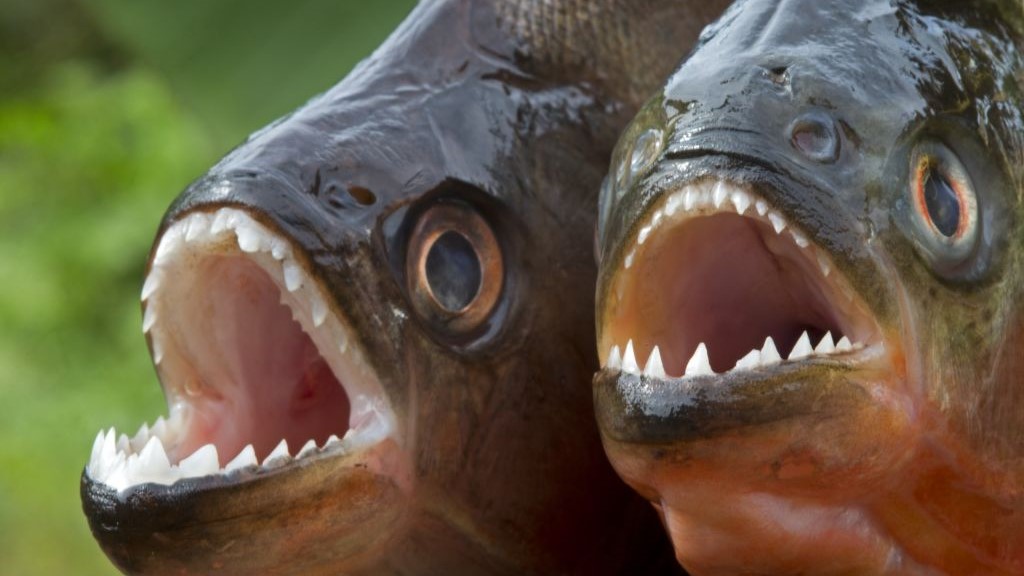Piranhas swarm 8 tourists at Brazilian resort, leaving them with bloody legs and feet
Piranhas had become accustomed to the free food discarded in the river. Once first blood was drawn, the school attacked en masse.
A school of piranhas attacked holiday makers playing in a stream in a Brazilian resort on May 1, leaving at least eight people injured.
The fish tore at the bathers' legs and feet with their razor-sharp teeth, driving them out of the water and onto a tourist beach in Tarumã-Açu, a region northeast of Manaus, the capital city of the state of Amazonas.
Experts think the biting frenzy was a case of "mistaken identity" and that the piranhas were actually after the food that visitors at local restaurants sometimes throw into the river.
"Piranhas do not exhibit unprovoked attacks on humans," Steve Huskey, a professor of biology at Western Kentucky University, told Live Science in an email. "The situation described is one of piranhas becoming acclimated to free food and those bites were just another example of mistaken identity, just like shark attacks."
Some piranha species, including the red-bellied piranha (Pygocentrus nattereri), engage in collective feeding frenzies. "Species of the genus Pygocentrus, that occur in the Amazon and São Francisco river drainages, are most dangerous," Paulo Andreas Buckup, an ichthyologist and professor at the National Museum of the Federal University of Rio de Janeiro in Brazil, told Live Science in an email.
But this behavior only occurs in exceptional circumstances, such as when a high number of fish are trapped in small pools or starved for a long time, according to the Sea Life London Aquarium. "These fish swim in schools and normally do not attack large animals," Buckup said.
Related: Swarms of 'mini-shark' beach bugs are on a foot-biting rampage in California
Get the world’s most fascinating discoveries delivered straight to your inbox.
Most piranhas are harmless and the meat-eating species tend to scavenge rather than hunt living animals. "Some species of the piranha family eat only fruit, insects and vegetable matter. Some specialize in eating fish scales and nibbling the fins of other fish," Buckup said. "They may attack other live fish or animals, but they will eat dead flesh whenever it is available."
The presence of bathers in a feeding spot, however, can lead to confusion and aggression. "Feeding piranhas in a tourist setting strengthens their natural behaviors to school and bite," Mark Sabaj Perez, an ichthyologist at the Academy of Natural Sciences of Drexel University, Philadelphia, told Live Science in an email.
The attack in Tarumã-Açu could have been triggered by a single piranha mistaking a foot for food, taking a mouthful and drawing blood, which in turn sparked a feeding frenzy. "An attack is likely to have been caused by presence of blood in the water, skin injuries or movement that appears as a fish in distress," Buckup said. "Because their teeth are so sharp, a single bite [could] cause a lot of bleeding and trigger group feeding frenzy behavior."
Once the meal begins, piranhas dart in and out to bite their prey at great speed to avoid being accidentally nipped by another individual, according to the Sea Life London Aquarium.
Piranhas have the strongest bite recorded in bony fish — as powerful as a great white shark, according to a 2012 study published in the journal Scientific Reports. The black piranha (Serrasalmus rhombeus) generates a bite force equivalent to 35 times its body weight, compared to just one time its body weight for a great white, according to Huskey.
"When a piranha focuses that bite force onto their 14 razor-sharp teeth, the bite pressure climbs to immeasurable levels," Huskey said. "They could do tremendous damage to humans throughout South America, if they were so inclined, but they're not… and they don't."

Sascha is a U.K.-based staff writer at Live Science. She holds a bachelor’s degree in biology from the University of Southampton in England and a master’s degree in science communication from Imperial College London. Her work has appeared in The Guardian and the health website Zoe. Besides writing, she enjoys playing tennis, bread-making and browsing second-hand shops for hidden gems.



